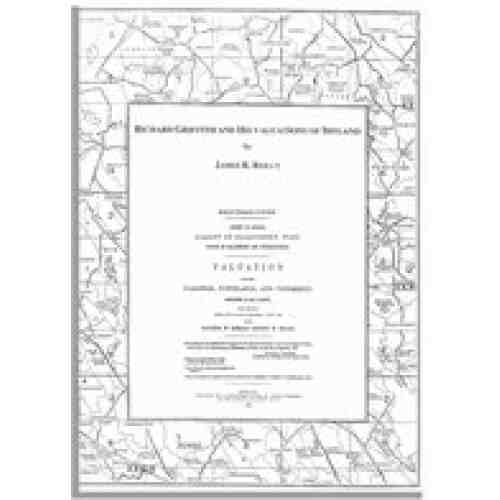Richard Griffith (b. Dublin 1784) had already established himself as a distinguished geologist and inspector of Irish mines when, in 1825, he was chosen to be Ireland’s Boundary Surveyor. Griffith’s appointment coincided with the government’s determination to achieve a uniform system of land measuring and valuing for the purpose of eliminating various inequities in levying the two main forms of local taxation in Ireland, the tithe and the county cess, at the townland level. As the head of the Boundary Department of Ireland, Griffith would spend the next forty years supervising land valuation in Ireland and, in particular, the great Ordnance Survey of Irish townlands which fixed local boundaries throughout the nation. The Ordnance Survey documents, comprising over 3,000 maps and 2,300 registers, and Griffith’s valuations of 1826, 1846, and 1852, were the surviving products of Griffith’s efforts, and they constitute perhaps the greatest sources in all of Irish genealogy.
In recent years more Irish researchers than before have achieved a passing familiarity with Griffith’s valuations. This is due in part to the publication of the valuations on microfilm and the more recent release on CD-ROM of a name index to the same. Very few people, however, know much about Griffith the man, the methodology behind the records, or, most important, how to make the best possible genealogical use of these sources. Thanks to the efforts of James Reilly, the author of the new book Richard Griffith and His Valuations of Ireland, this need not be the case any longer.
The content of Richard Griffith and His Valuations of Ireland can be said to be divided into two parts. The first half of the volume treats the history and method used by Griffith and his colleagues in producing the valuations. Here Reilly explains how the surveys were conducted, how standard Irish forms of townland names were assigned, how the descriptive Ordnance Survey Memoirs were compiled, and what one can expect to find within their rich contents. In separate chapters devoted to the three valuations, Reilly describes, among other things, how the valuators assigned a value to property, how the information was publicized, and the relationship of the valuations to the new Irish Poor Laws. Facsimile illustrations of maps, memoirs and other documents from the valuations abound here as they do in the second half of the work, a discussion of Griffith’s genealogical importance.
Although the Griffith’s is not a census (many people regard it as a substitute for the Irish censuses lost in the Public Record Office fire of 1922), “Griffith’s Primary Valuation,” or simply “Griffith’s Valuation,” as it has come to be known, provides the following information for each tenement in each Irish townland: names of townland and occupiers, names of immediate lessors, description of tenement, acreage, valuation of land and buildings, and reference to the corresponding map from the Ordnance Survey. Given its content and its proximity to the Great Famine of the late 1840s, Griffith’s Valuation has taken on great importance for genealogists. In the genealogical section of his treatise, Mr. Reilly burrows into the intricacies of the valuations, showing how an understanding of the abbreviations and shorthand used by the valuators can lead the researcher from the valuation to other Irish records and additional discoveries concerning one’s ancestors. The rich appendices that follow include a glossary of key terms appearing in the valuations, dates of publication of the Ordnance Survey Memoirs, county-by-county commencement and completion dates of the tenement valuations conducted from 1846 to 1864, and an extensive inventory of the Books of Sir Richard Griffith’s General Valuation of Rateable Property in Ireland.
In conclusion, thanks to Mr. Reilly’s prodigious effort, no one who has ever operated in the dark with respect to the Griffith’s need do so again, while anyone who consults Richard Griffith and His Valuations of Ireland is likely to come away with a far greater number of trails to follow among Irish records than he/she had ever anticipated.


